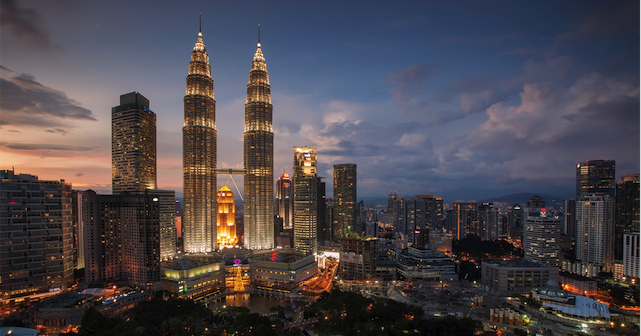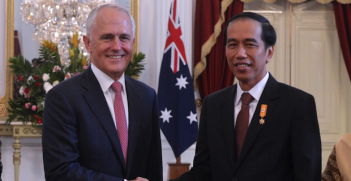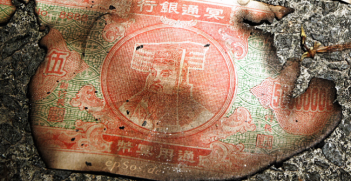Malaysia's Government Silencing Dissent

The current scandal embroiling Prime Minister Najib Razak has led the Malaysian government to crack down on press freedoms. But a restricted mainstream Malaysian media has not stopped the publishing online of information on the ongoing corruption scandal surrounding the Prime Minister and 1Malaysia Development Berhad (1MDB). It remains to be seen whether Najib’s crackdown will secure his position or whether the media will help unseat him.
Earlier this year, Thomas Carothers from the Carnegie Endowment of International Peace described our current times as a “paradox”. Despite rapid and transformative advances in communications and information technology allowing for greater freedom of expression, the number of democracies today is basically no greater than it was at the start of the century. How has the “paradox” unfolded in Malaysia?
Malaysia’s online media is not exempt from legal and state pressures, but former prime minister Mahathir Mohamad’s decision in 1996 not to regulate or censor the internet has allowed Malaysia’s online media to become a relatively more open and vibrant space.
Malaysia’s internet penetration rate is now at 68 per cent of the population and well over 80 per cent in urban areas. At the same time, newspaper circulation has decreased in government-owned newspapers such as Utusan Malaysia, The Star, The New Straits Times and Berita Harian. Print media circulation is dropping in most countries worldwide where internet penetration is rising. In Malaysia this has been fuelled by the reality that many Malaysians are tired of government-sponsored messages and are reaching for alternatives.
Internet users are also younger. In the lead-up to the 2013 election, 64 per cent of Facebook users in Malaysia were aged between 18–34 years, while 62 per cent of the total unique visitors to the internet were aged between 15–34 years old. As Meredith Weiss has argued, Malaysia’s young voters’ “political identities will have been moulded in a fundamentally different discursive environment than those of their elders”. This is in no small part due to the changing nature of information disseminated via digital media platforms.
Social media played a prominent role in mobilising events such as the Bersih [Clean] rallies, which called for free and fair elections, and in the flourishing of anti-government material spread through young, urban communities. In a telling sign, in the 2013 election, urban voters largely voted for the opposition.
There is little doubt that changes in digital media technologies have tested the regime’s ability to control and massage the flow of information in Malaysia. Numerous international media have reported on the corruption scandal involving Prime Minster Najib, as well as the story of Mongolian model Altantuyaa Shaariibuu, who was murdered at the hands of the prime minister’s former bodyguards. These stories put Najib’s “already unstable tenure on even shakier ground”.
All these stories are regularly reported in Malaysia’s online media and shared on social media sites. These stories may be written or produced by “foreigners”, but they easily enter the local news cycle in the digital era. Online media sites such as The Sarawak Report, Malaysiakini and (until recently) The Malaysian Insider have regularly covered the investigations of other news outlets, in addition to the various investigations of their own.
Malaysia’s The Edge Financial Daily also reported on irregularities pertaining to 1Malaysia Development Berhad (1MDB) in 2013 and 2014. In the aftermath of the recent 1MDB scandal it continued to boldly uncover details of the case. It was a path that Edge Group founder Ho Kay Tat said was “one that we knew will be fraught with risks to ourselves personally and to our organisation”. Even the flagrantly pro-government newspaper Utusan Malaysia has seen a long-time editor resign over the scandal.
Najib believes that the 1MDB scandal has become a “trial by media”, and has claimed the allegations were a “political conspiracy” against him. The Edge was suspended from publishing, with the excuse that it “threatened public order”. The Sarawak Report founder Clare Rewcastle-Brown was banned from entering Malaysia in 2013, and in July 2015 the site was blocked in Malaysia for its coverage of the 1MDB scandal.
In early 2016, the US-based website Medium.com was likewise unable to be accessed in Malaysia because it republished material from The Sarawak Report. Most recently, The Malaysian Insider was forced to close because, in the words of its founder Jahabar Sadiq, sites like his had become “too free for the government of Malaysia”.
Meanwhile, Malaysian citizens warned that sharing “misinformation” via social media sites could lead to police intervention. Najib has threatened to sue international media such as The Wall Street Journal as well as the Sydney Morning Herald. Al Jazeera journalist Mary Ann Jolly was banned from entering the country, while Australian journalists working with the current affairs program Four Corners were arrested in Sarawak for “doorstopping” the prime minister. They were later released, but left the country immediately.
Many Malaysians are still hoping that increased transparency, participatory media and the 24-hour news cycle enabled by digital media will bring about meaningful political change. But at the moment the harsh retaliations from the state are ushering in a more ruthless and resilient authoritarian regime, ultimately negating the pro-democracy forces in the country.
Dr Ross Tapsell is a lecturer in Asian Studies at The Australian National University. He researches the media in Indonesia and Malaysia. This article originally appeared on East Asia Forum on 30 March. It is republished with permission.





